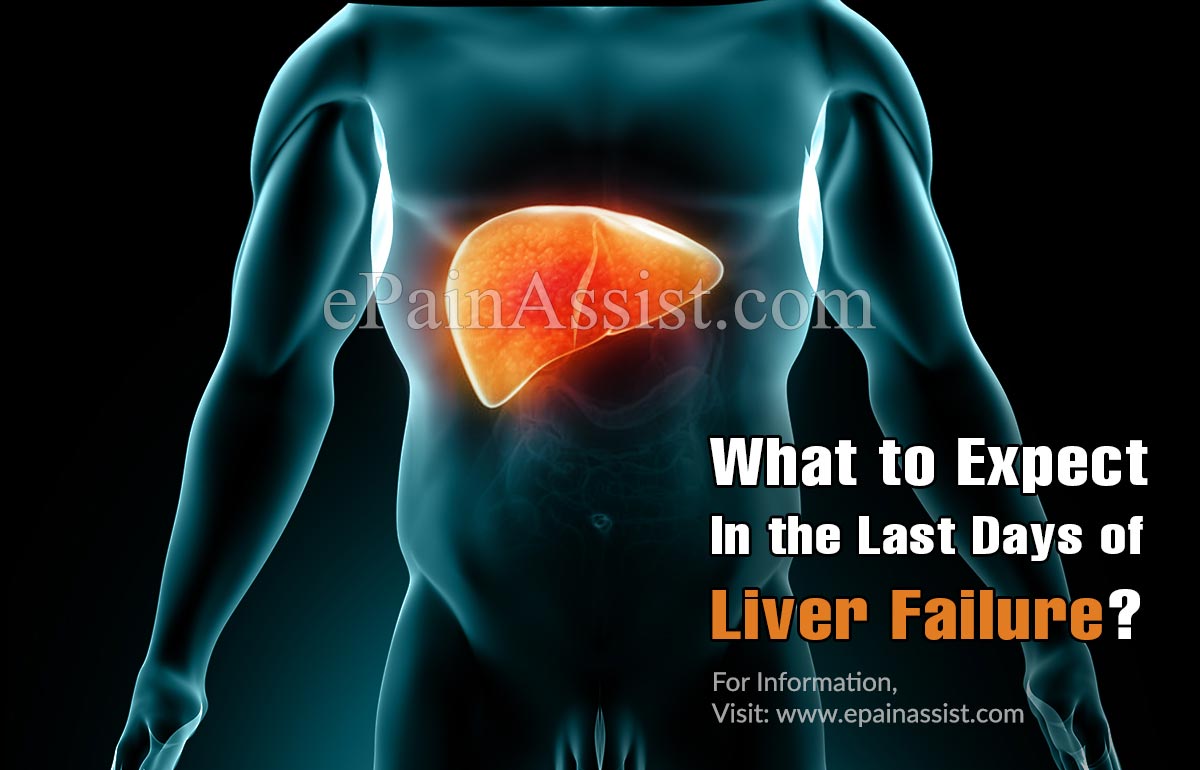What to Expect In the Last Days of Liver Failure?
Liver disease induced by numerous factors is a serious threat to human life. The end-stage liver disease is considered as “terminal phase,” a heavy burden to patients affecting their life and family members as well. Most frequently they need hospitalization where treatment is the only options to improve the quality of the life and prognosis. Though modern medicine has an effect on the end-stage liver disease, still the death percentage becomes higher and rate of survival is poor. Liver transplantation is not feasible to all patients as it meets strict medical standards and the comorbid condition is significantly associated with all-cause of graft rejection. In case of advanced liver disease, referral to palliative care remains high in many countries in spite of patients at the risk of death.

What is Meant by Palliative Care?
Palliative care is a special supportive care intended to extend the survival time of the patients. It actively involves physical and mental support to improve the life quality, lecturing about the illness and spiritual care of the patient and their family. Drug compounding and management of pain are effective in palliative care for patients with irreversible end-stage liver diseases.
Life Expectancy Is Uncertain For Liver Failure Patient
Liver cirrhosis is the result of end-stage chronic diseases which may progress a year or decades. At this stage, life expectancy depends on the health and disease condition, patient’s age and treatment response. Patients who have a medical history of liver disease, additional infection because of alcohol abuse or any viral infection definitely lead to a severe deleterious consequence. A significant decline in life expectancy is certain and still, today there is no precise report available on individuals life survival compared to normal people.
Allograft Recipients
The life expectancy for allograft recipients is similarly at risk as there is a chance of recurrence of liver disease or malignancy, co-morbid condition, and poor prognosis because of immunosuppression. Even though liver transplantation is life-saving, patients who are sick enough to die are considered for the enrollment in the transplant list. However, it is most challenging and normal life highly unpredictable.
Cases of Acute Liver Failure
Many death cases reported after allograft in just 3 months to 3 years because of most bacterial and viral infection. The threat was higher in the elderly patient and also young individuals who are the recipient of older or partial grafts. Cirrhosis related to alcohol consumption are irreversible results in the clinical manifestation of portal hypertension and finally cause death. Drug-induced acute liver failure is more than 50% in the US. Hepatitis A, B, and E another reason for the cause of acute liver failure with more than 50% death in the developing countries. In several cases, the reason for acute liver failure remains unidentified.
End-stage Liver Disease Symptoms Before Death
In the initial stage of liver cirrhosis because of portal hypertension, the liver tends to swell abnormally, a condition called splenomegaly where surface becomes irregular. The normal detoxification of ammonia to urea is stopped and its accumulation in the arterial alters the cerebral functions. In the late stage, low platelet count makes the health from mild to severe deterioration. At this stage, patients experience the psychological stress, personal concerns, social stigma, devastating symptoms like bleeding in the skin, renal syndrome, shortness of breath, jaundice, swelling of legs, intense itching, vomiting blood, weight loss, fatigue, coma and memory loss. Multi-organ failure because of poor immunity and death occur in more than half of the cases.
In many countries, development of effective care has been encouraged widely to patients with end-stage liver diseases.
Also Read:
- Liver Cancer or Hepatic Cancer: Classification & Types, Causes, Risk Factors, Symptoms, Signs, Investigations, Treatment, Prevention
- Fatty Liver Disease (FLD): Causes, Risk Factors, Symptoms, Treatment, Prevention
- Cirrhosis Of Liver: Causes, Symptoms, Diagnosis, Treatment, Complications
- Liver Damage or Liver Failure: Causes, Signs, Symptoms, Prevention
- Steatosis of Liver: Causes, Symptoms, Treatment, Diet, Pathophysiology, Epidemiology, Prevention
- What is Enlarged liver or Hepatomegaly: Causes, Symptoms, Treatment, Recovery, Complications
- Liver Metastases: Causes, Symptoms, Treatment, Stages, Survival Rate, Prognosis
